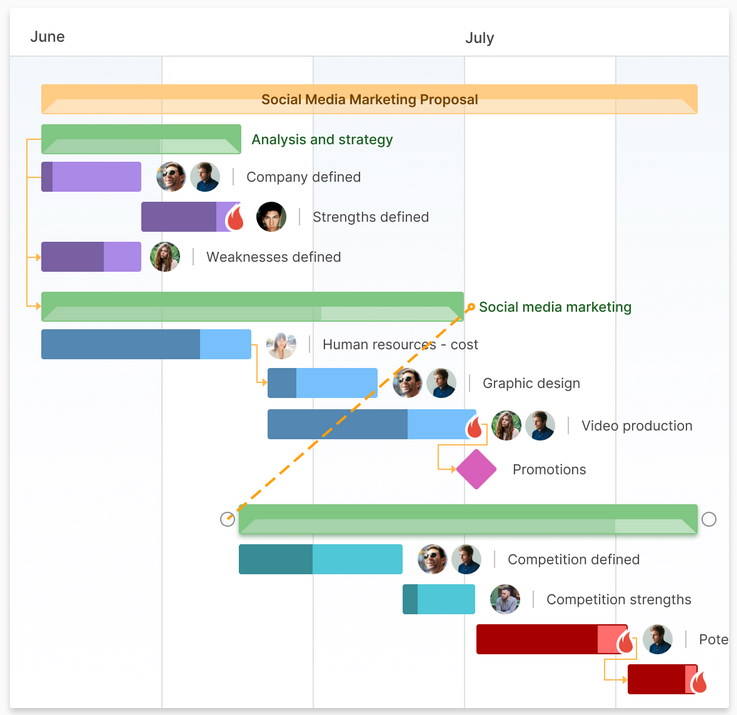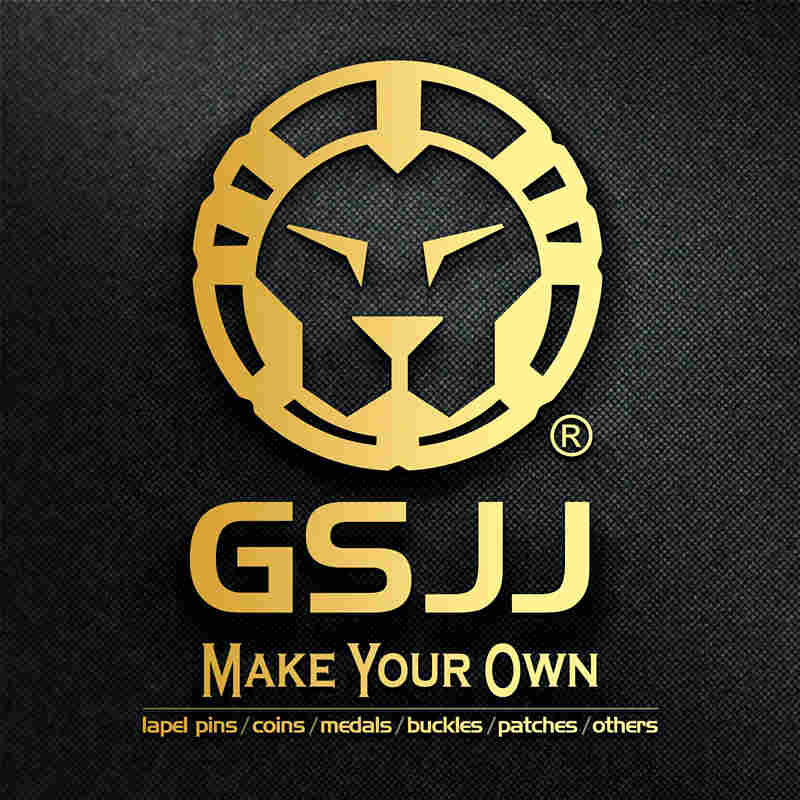
The 12 tips to improve productivity in a manufacturing company
It is essential to know about the productivity of a manufacturing company. Many factors affect it. Productivity defines the company's growth precisely!
Here are some tips on ensuring your manufacturing is competitive and cost-effective. It might have a significant effect on how much you pay. It has the potential to affect your profitability significantly.
Here are some 12 suggestions for increasing manufacturing output:
1) Project Mgmt Tool for Team Coordination
2) Staff should be trained and motivated.
3) Know about the products.
4) Know how the products can be used (working knowledge).
5) Organize your components and materials.
6) Use appropriate totes for handling.
7) Make efficient use of space.
8) Maintain and troubleshoot machines.
9) Reduce waste produced by machines.
10) Reduce interruption-induced downtime.
11) Be realistic & Reduce downtime.
12) Being prepared for peak demand.
12 Ways for enhancing productivity for Manufacturing Company
1. Project Mgmt Tool for Team Coordination:

Project management tools are critical for organizing a team's activities, ensuring all tasks are correctly assigned and tracked, and meeting deadlines. Gantt charts can be excellent for tracking everything effectively as this helps to visualize the workflow more efficiently.
Production projects are often demonstrated with Gantt charts as they provide the solutions to organize initiatives scheduled on facilities and offer visibility to recognize possible challenges before they emerge.
Gantt charts allow for enhancement within your production procedures and assist managers in handling production and dispersion runs to minimize lead times.
If your production business needs an easy Gantt Chart maker, GanttPRO.com, is an excellent Gantt-based project management tool that is well-suited for production.
GanttPRO is a quick and easy way to build and manage Gantt charts, a popular project management tool for visualizing project progress and identifying potential challenges.
2. Staff should be trained and motivated:
Assessment Evaluate your current situation. Before deciding how to increase productivity, measure your current output and identify any bottlenecks or "pain points" in your manufacturing process.
Procedures, processes, technology, and the people responsible for bringing them together are all examined. The channels (and methods) of communication, as well as the resources available to drive improvements, are additional secondary considerations.
In addition, to ensure ongoing improvement, ensure that any modifications are recorded alongside the observed or measured improvement (or lack thereof).
Training and motivating employees is one of the most often-ignored methods for increasing manufacturing productivity.
3. Know the products:
Your equipment and processes are constantly evolving in some way, depending on your industry and product type. It could be new product lines, advancements in technology, or even changes to laws.
As a result, training employees, even those who have been with your company for a long time, can help increase efficiency and ensure that best practices are followed more closely.
Train and reward employees. Cross-training is another factor that is often overlooked when attempting to boost output. Training and rewarding employees can be a quick win. Multi-skilled staff can ensure productivity is not harmed when team members are absent due to illness, planned leave, or holidays.
It can also help to alleviate bottlenecks in some areas and reduce downtime (i.e., they know how to work on the following necessary process once one job is finished).
4. Know how the products can be used (working knowledge):
Product Knowledge Having a working knowledge of the products being made is just as crucial as teaching employees how to use different machinery or processes in their manufacturing setup.
Having a working knowledge of the products can also lead to surprising outcomes.
Manufacturing efficiency begins with knowledgeable employees who feel valued and engaged—a side effect of training—and can frequently result in employee-generated suggestions for improvements.
And this doesn't have to be formal training in a classroom; supervised on-the-job training can be just as practical and less disruptive.
5. Organize your components and materials:
To make it easier to find the parts and materials you need, organize them. Money and staff time can be significantly wasted if there isn't enough organization.
This is especially true if materials or components are stored at various stages of the manufacturing process, and the time required to retrieve them is a significant expense for your staff.
If your storage and warehouse facility is well-organized, this "picking" process, which can be further enhanced with appropriate parts or picking bins, will improve.
The increased speed at which the parts or components arrive at your manufacturing line will increase productivity.
Additionally, it will prevent production from seizing while you wait for items and cause delays. This is also true for reducing picking errors, which calls for the organization's assistance.
With improved organization, stock shortages can be detected more quickly, preventing downtime.
6. Use appropriate totes for handling:
Picking bins and shelf bins can be helpful for this purpose. We are handling it. Use the right tools and containers for handling.
It will not only make it simpler to select and retrieve your components and materials, but it will also allow them to move around your manufacturing facility and even between different locations, which can reduce productivity.
It is essential to use handling totes, such as those made of Correx®, not only to make manual handling easier but also to guarantee worker safety.
Use the appropriate totes. Moving parts and components safely between sites can be made more accessible with suitable totes.
Using totes with suitable dividers can also make it easier to move more things at once, make it easier to quickly check stock, and stop parts or components from being wasted if they get damaged while being moved.
7. Make efficient use of space:
Make efficient use of the available space. Making the most of your space can be an unexpectedly effective way to increase manufacturing productivity.
This can be done by building on the picking procedures and moving parts around your factory. The time workers spend moving from one area to another directly impacts manufacturing efficiency.
Moving multiple items with a tote and ensuring that picking errors are minimized through the well-organized stock and parts bins can significantly impact your factory floor's efficiency.
This can be accomplished by bringing machines and frequently used equipment closer together. Additionally, you can stock up on components or parts closer to where they will be needed.
In the end, if you want to make working with parts, products, and people go more smoothly, consider changing the layout of your manufacturing floor.
8. Maintain and troubleshoot machines:
Machine troubleshooting and maintenance are essential for maintaining and increasing productivity. Regular maintenance and troubleshooting of your machinery and equipment are essential.
In this regard, employees who use these days must also be trained and trusted. If they are familiar with the equipment, they will be the first to spot a problem and may be able to resolve it without causing too much disruption.
Additionally, it can be crucial to avoid more severe issues if you are aware of the warning signs that something is not functioning appropriately or even to capacity. It is much simpler to take care of and maintain a machine than to repair it when something goes wrong.
To avoid downtime and its adverse effects on productivity, machine troubleshooting and preventative maintenance will be helpful.
9. Reduce waste produced by machines:
Reduce waste. Each component is broken or unusable and costs money. Every unfinished product costs money. Your brand and reputation are harmed, and it costs money for each item returned by customers.
Consequently, picking bins and handling totes, which safeguard items during transportation, are essential.
While it is understandable that errors can and will occur, it is essential to identify the root cause and implement a solution (such as new procedures, equipment, or training) if they become persistent.
10. Reduce interruption-induced downtime:
Most of the points above are directly connected to preventing downtime in manufacturing. Additionally, there are several ways to avoid downtime.
For instance, if machines are not maintained properly, they may break down, causing production lines to stop.
Because employees may choose the wrong components, possibly due to poor organization, production may be slowed while the correct items are found. Similarly, if components do not arrive at the production line on time, it can cause delays.
In addition, you should have staff with a wide range of skills who can work on different parts of your manufacturing to help with bottlenecks when they occur or to handle planned or unplanned absences.
It is essential to keep in mind that, in the end, you will lose money for every minute that production is stopped.
11. Be realistic & Reduce downtime:
Efficiency in manufacturing and preventing or minimizing downtime are essential to increasing manufacturing productivity.
Being realistic about customer expectations, tight deadlines, and external pressures (like logistics and delivery times) can all lead to distorted and frequently unattainable goals.
Managing expectations diplomatically and avoiding quality or safety compromises in situations like this is essential. Employees may need to be more motivated, decreasing productivity rather than increasing it.
Therefore, once you have a complete picture of your current productivity, prioritize output quality, punctuality, and safety by setting attainable goals.
Employees can also feel valued and engaged when they are involved in projects and given feedback.
12. Being prepared for peak demand:
Lastly, being prepared for peak demand can significantly affect productivity levels.
Failure to prepare can also hinder productivity, even though increased productivity is beneficial in meeting any challenges posed by an increased workload.
If there is an accumulation of production backlog, employees may become demotivated; An excessive stock of materials or components on-site hinders the organization and continues until the additional requirement is satisfied.
Again, practical procedures, staff with various skills, and the right equipment can be crucial in this situation.

Local Business Listing
Get a PagePromote your business to local customers.
manufacturer In Business
what is a slip ring
Added On (2023-08-27 14:31)
introduction and benefits of coupling nuts in high precision applications
Added On (2023-06-28 23:36)
an exhaustive survey of aobong boycott thiet ke
Added On (2023-05-16 23:41)
12 ways for enhancing productivity for manufacturing company
Added On (2023-01-30 17:22)




